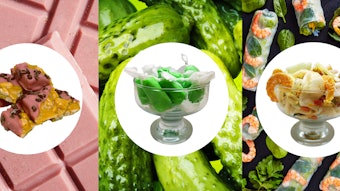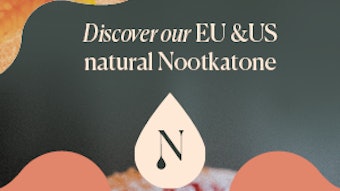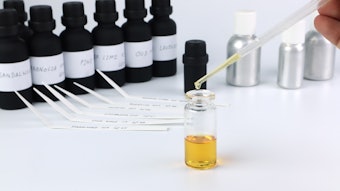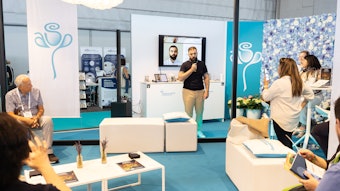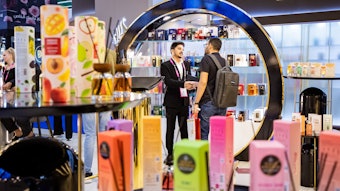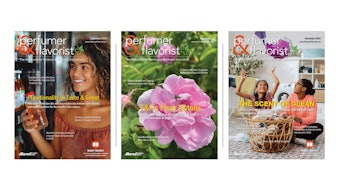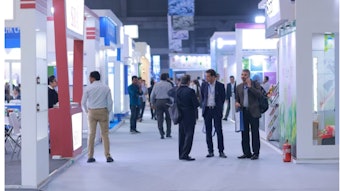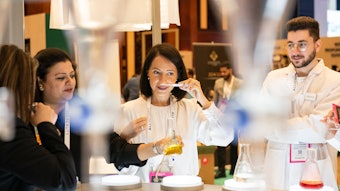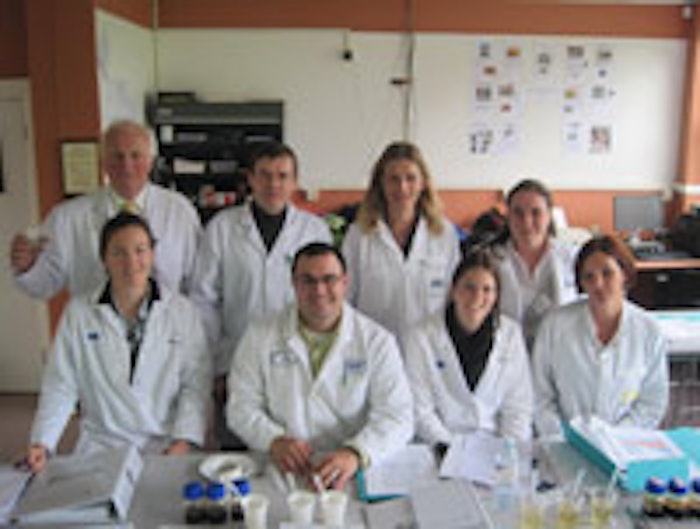
More in savory flavors. More in events.
“Creating Savoury Flavours” took place Oct. 19–23, 2009 in England. The course was comprised of a highly structured mix of lectures and practical sessions. The lecture program explored the origin of flavor precursors in meat, the reaction of these precursors to form meat flavor, and pinpointed the target character impact compounds in the different meat species that are important to reproduce in a flavor system. A lecture on the practical guide to reaction flavors outlined the range of raw materials available, process parameters and manufacturing methods, and provided the participants with the means to construct and engineer their own flavors.
The lecture program focused on the understanding of ingredients other than amino acids and sugars that can be used in process flavors, including yeast extracts, HVPs, spice oleoresins, essential oils, fats, oils and other food ingredients. The use of these materials provides complexity and subtlety and offers a unique creative pathway. In addition, various other savory themes were included in the course such as the use of enzymes to produce precursors for reaction flavors and the production of enzyme modified cheese flavors. Topnotes used as a post-reaction addition to process flavors were also examined and made available to participants to use in their creative work.
The practical sessions were split into guided and creative. The guided sessions were designed to familiarize the participants with model process reactions and demonstrate the influence of different ingredients on flavor, while the creative sessions allowed the participants free rein to design their own process reactions utilizing the knowledge gained during the first part of the course.
The course participants had a full day in teams creating their own red meat flavors and a second day creating white meat flavors; the most successful flavors were selected and applied to food bases. A raw material library of over 200 ingredients was made available for use in the creative sessions and the course became quite competitive with the different teams vying to produce the winning flavors for both red meat and white meat as judged by the tutors.
Alongside all the practical lab sessions and lectures, delegates enjoyed a wine tasting evening, a curry night, and a traditional English fish and chip lunch, resulting in a truly memorable flavor experience. The final night culminated in a presentation dinner where delegates received their certificates, commemorative polo shirts and framed course photos.
Summary
This laboratory based course gave flavorists a chance to step outside their normal daily activities and focus on the components and construction of a savory flavor, undertaking practical experiments with process reaction flavors, enzyme modified flavors and topnotes. They had the opportunity to go back to basics to examine the interaction between the components and study synergies and clashes, understand how a flavor functions in the final food and trace that performance back to individual components within the formula. The theme of creativity was a constant running throughout the course: how it can be stimulated and applied to the day-to-day working methods of the flavorist.
Acknowledgments
Course tutors, David Baines and Richard Seal are sincerely thanked for their hard work, dedication and enthusiasm for the science of flavor technology.
2010 Course Details
The next course is planned for April 12–16, 2010. The course attendees are limited to a maximum of 8–10 delegates due to the practical nature of the course. This course will likely run only once next year, so interested delegates are encouraged to register immediately.
To register, contact Helen Moore at Verner Wheelock Associates, tel: 44-0-1756-700802; email: [email protected].
